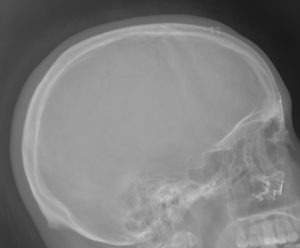Aging presumably affects every structure of the body to some degree which generally involves some loss of structure. This has become elucidated in the face over the pas decade where bone loss occurs throughout the facial skeleton and contributes to the overlying soft tissue laxity that develops.

From these measurements the authors demonstrated that as people got older there was a decrease in sagittal diameter in both males and females and an increase in transverse diameter in both males and females. Frontal bone thickness decreased in males whereas it increased slightly in females. At the pterion, bone thickness increased significantly in both genders. Calvarial volume decreased with increased age in both males and females.
The authors conclude that the widening of the skull may have a role to play in the skeletonized appearance that develop in many people as they age. The loss of skull volume can be a source of lessening support for the soft tissues in the face which ultimately contributes to its inferior descent. This would be Jost evident in the brows and periorbital areas as well as across the temples.
While the skull may lose bone with aging, what would be aesthetic procedures that may be beneficial. Temporal implants come to mind since they help restore volume/shape to temporal hollowing. You could also make an argument for skull augmentation which would create an overall lifting effect of the facial soft tissues which I have seen many times in my younger patients who get overall skull augmentation.
Dr. Barry Eppley
Indianapolis, Indiana


